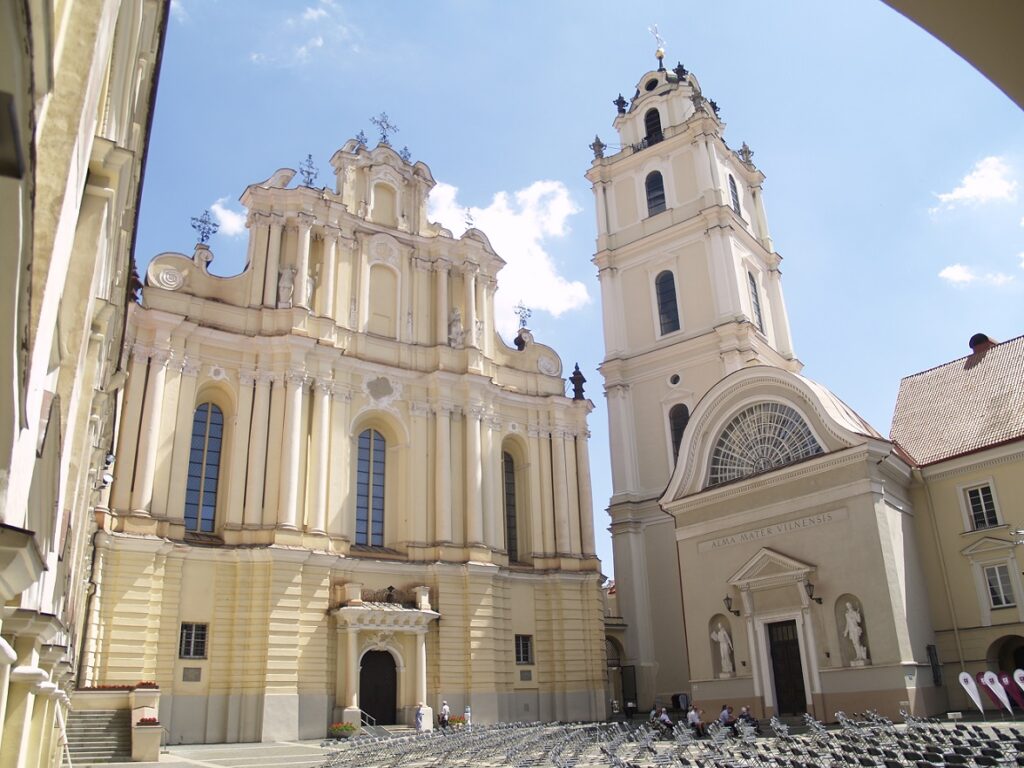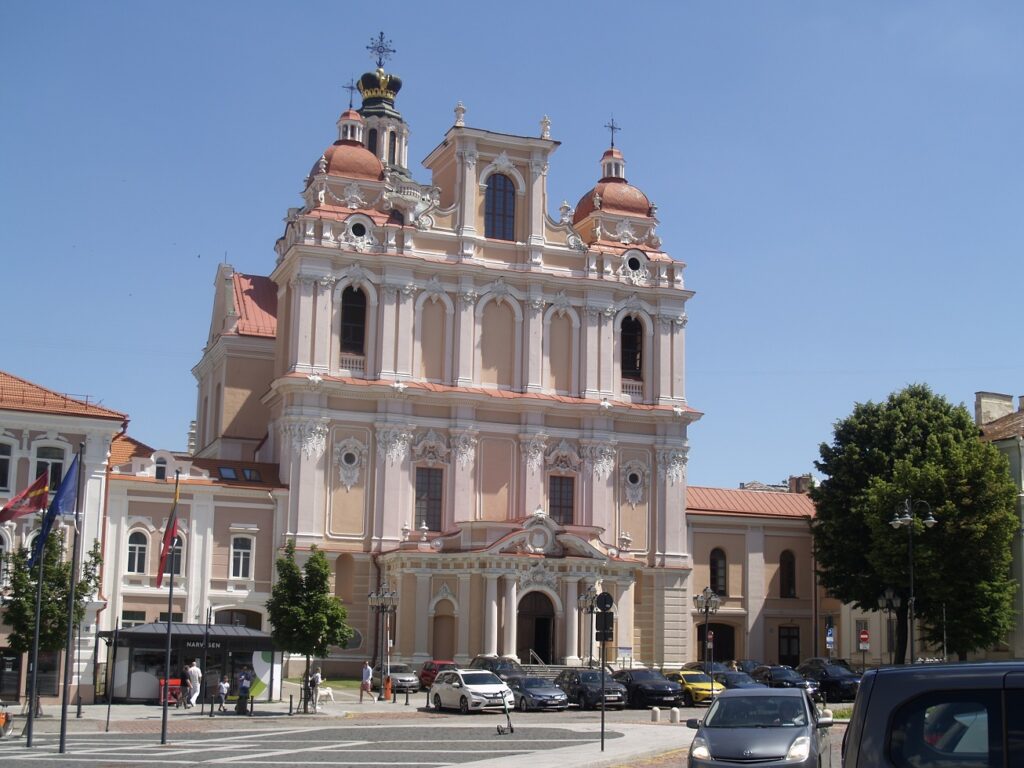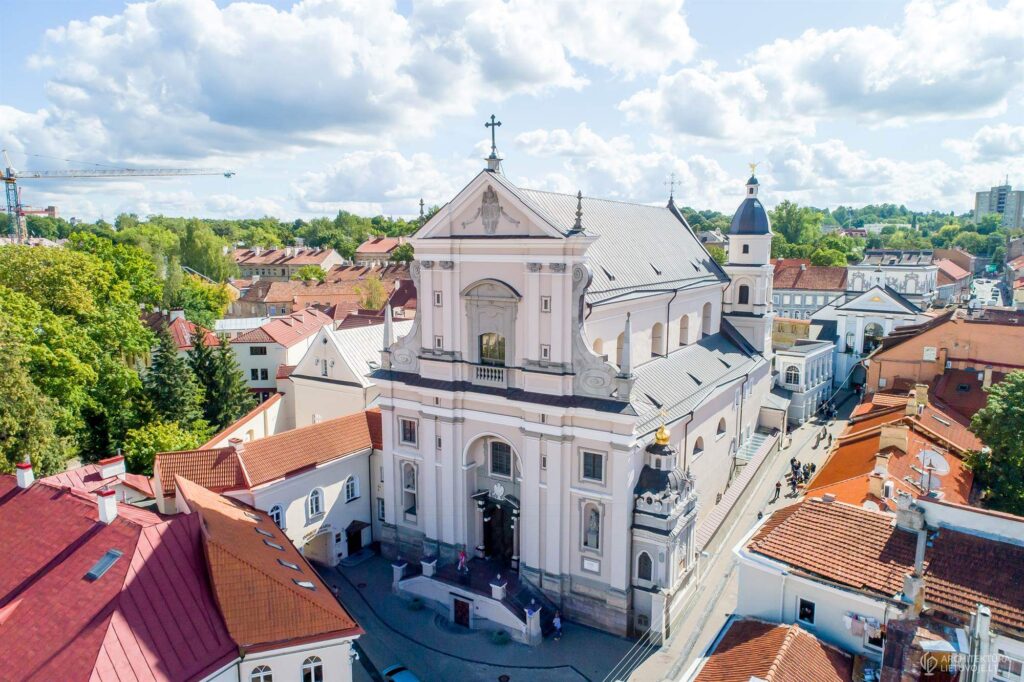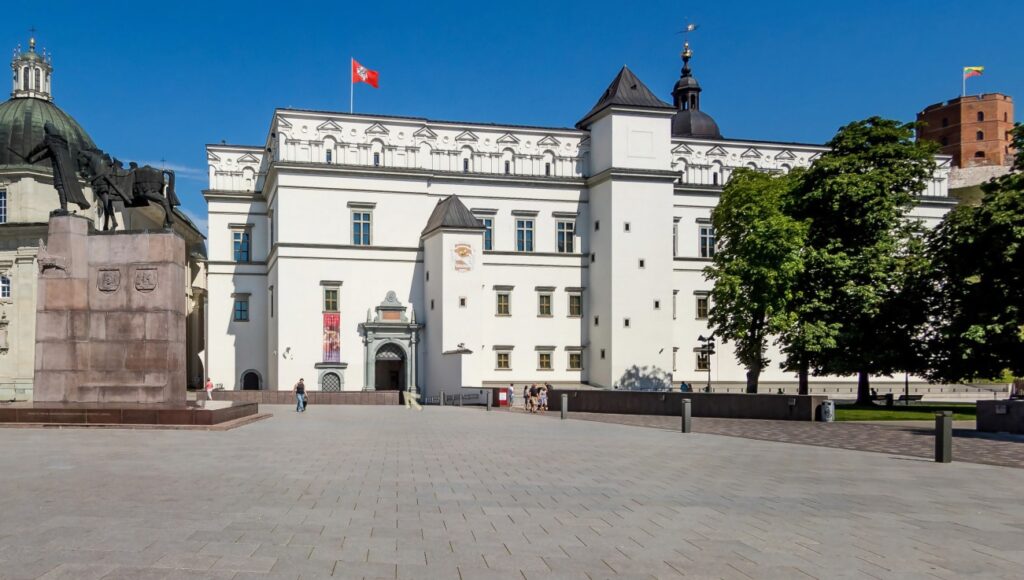5 Baroque Churches in Vilnius You Should Visit
The term baroque is a style of architecture used mostly by the Europeans countries in the 17th and 18th centuries. Baroque churches that have this kind of style so much exist in Vilnius. This, below is a list and brief description of baroque churches in Vilnius that have this style of structure.
Baroque Church of St.John

Church of St.John (St.Jono St. 12, Vilnius) is situated around 13 courtyards. It contains buildings and works of art of various styles and from different periods.
Nowadays the main entrance is through the Library Courtyard. The decoration of the superstructure reflects the principle of announcing the content of the building on its outside, already familiar from church facades. The space between the windows are adorned with paintings of lanian pilasters.
Above the windows, in the painted medallions under the curved pediments, are symbols of the planets.
The most impressive part of the Great Courtyard is the Church of St.John and its bell tower. It was built as a parish church and was finished in 1426. Today its Gothic forms and interior space are concealed under its Baroque and neo-Classical reworkings.
The church has a nave and two aisles, and no towers. The facade is like a symmetrical, undulating mantle shrouding the tall Gothic inner space. It also relies on the Baroque principle of making the decoration more complicated higher up.
St.Casimir Church

The Church of St.Casimir (Didžioji St.34, Vilnius) is the oldest residence of the Jesuit community which still lives in Lithuania.
The Chapel of São Casimiro is definitely the glory of the cathedral. It is a remarkable place of devotion to Saint Casimir, who died in 1484 and son of Casimiro Jagiello, King of Poland and Grand Duke of Lithuania.
The church of Casimir was confirmed in 1602 and St.Casimir became the first Lithuanian saint. His remains are in the most beautiful St. Casimir’s Chapel in Vilnius Cathedral. It is worth visiting the Church of St.Casimir, which is the first and oldest Baroque church in Vilnius.
In addition, the Kaziukas Fair takes place in Lithuania on the weekend after St. Casimir.
Church of All Saints

The Church of All Saints (Rūdininkų St.20, Vilnius) is a Baroque church in Vilnius, Lithuania. The Church of Todos os Santos was built between 1620-1630 and was adopted to meet the needs of the Carmelites.
In the second half of the 17th century, the church was linked to a monastery and formed a single complex.
In the second half of the 17th century, the church was linked to a monastery and formed a single complex.
The bell tower is tall and massive, with elaborate decorations. A large Carmelite convent of the old rule, built from existing buildings, is located near the church. The Church of All Saints is at the end of Szpitalna Street, where the main gate of the Jewish ghetto used to be.
Church of St. Peter and Paul

I would consider this church as the pinnacle of Baroque church architecture in Lithuania, the Church of St. Peter and St. Paul offers visitors the opportunity to see rich ornate decoration and over 2,000 figures carved into the stucco.
Completed in 1701, the church and its grounds are surrounded by a high wall and several small chapels.
Enter the main basilica to see its glossy white interior filled with reliefs, paintings, and columns. Stroll inside and explore the various chapels, connected along the perimeter of the building by a series of hallways.
Watch out for the statues of Jesus and other religious figures.
Church of St.Teresa

The Church of St. Teresa (Aušros Vartų St.14) is one of the most visited Baroque buildings in Vilnius. This is due to its proximity to the Dawn Gate and the fact that it remains one of the earliest Baroque buildings in Lithuania.
Built in the mid-17th century, the Church of Santa Teresa was inspired by the Church of St. Maria Della Scalla of the Carmelites of Rome.
In addition to its very impressive main altar, this Baroque building retains the expensive building materials that were used to build it – Swedish sandstone, marble and granite.


